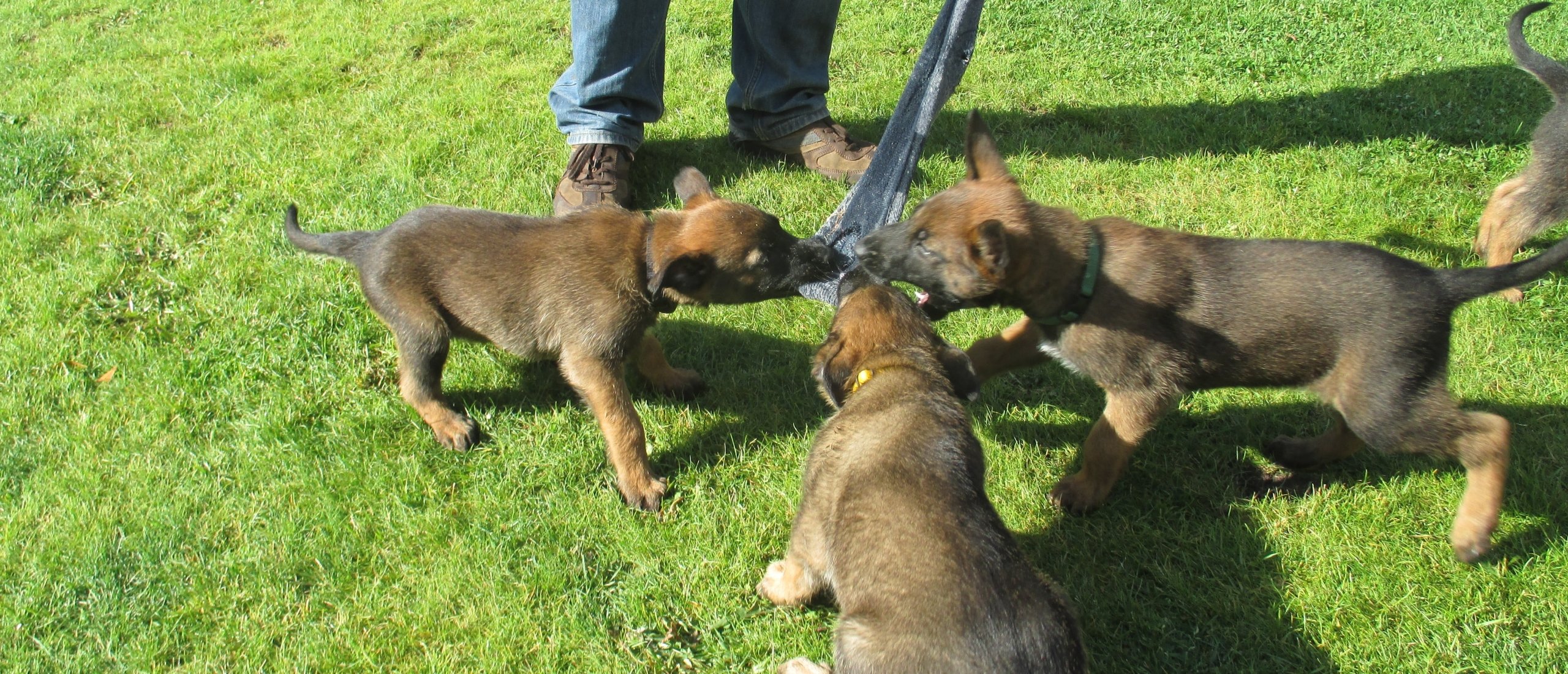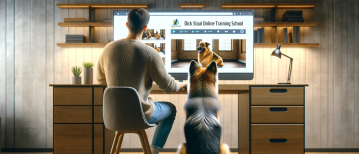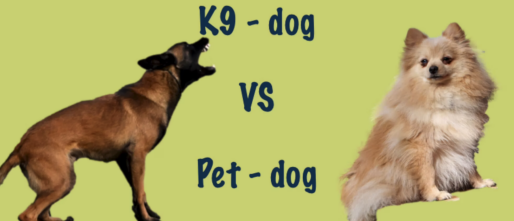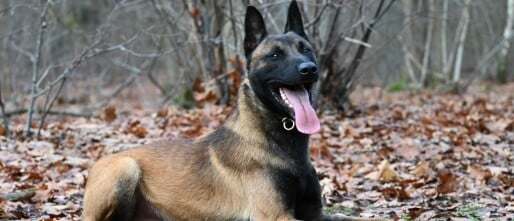What should I do with a dominant puppy?
If you start looking on the Internet for what to do when a dog growls at his boss or others, there is really only one general advice: "Stop your behavior immediately and back off or leave." After all, the dog is indicating that he doesn't want something and so we should respect that and watch out. Otherwise, there is a chance that the dog could start biting you.
Of course, there are different reasons why a dog growls. A dog can growl when he is playing or during a game of pull. But there can also be fear, insecurity or pain. In this last case we must certainly be very careful and try to find out what is going on. And then to deal with this with policy. Often there is also talk of a relationship between boss and dog where in the past things have gone wrong.
Correcting a dog when he growls can have as a consequence that the dog will growl a next time in the same situation and will bite directly. This because growling the previous time did not have the desired effect for the dog and he will skip this step.
Whatever the reason is for a dog growling, one thing is certain: If it concerns an older dog that growls, then there is actually always a dangerous situation that must be taken into account. The dog can then namely start biting. Perhaps it is wise to get advice from an expert on how to deal with this.
But what to do if we have a dominant puppy that growls at the boss or other family members? In that case it is wise not to accept that from day one and to make clear to the pup that we do not want that.
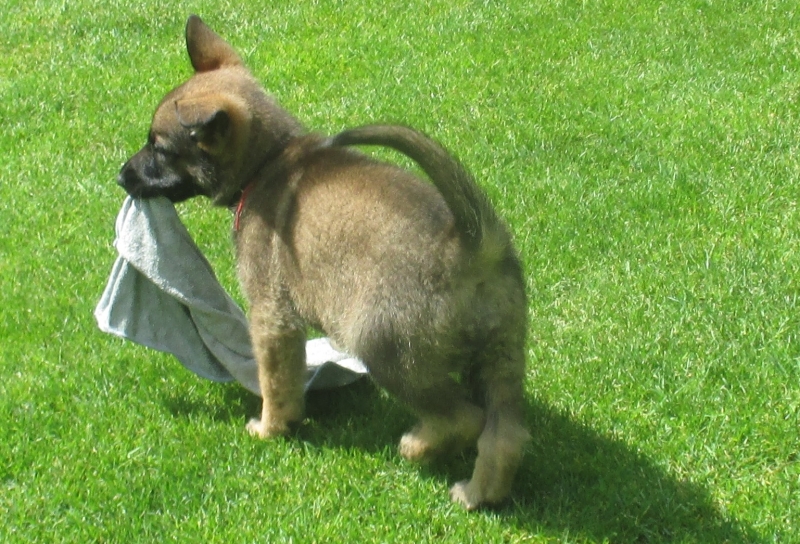 This is a dominant puppy, grabbing a cloth in his mouth and running away with his tail up.
This is a dominant puppy, grabbing a cloth in his mouth and running away with his tail up.
But what is a dominant puppy?
If we are going to test a puppy at 8 weeks of age then, we usually look for the most dominant and feisty puppy from the litter. The one that is the boss in the litter and overpowers the other puppies, so is the strongest puppy. The most dominant pup will in future usually develop into the strongest dog compared to the other pups in the litter. But here, of course, other important aspects play a role, such as a correct upbringing and a well-built training. To pick out the most dominant puppy, we use a puppy test that we developed.
We do this by putting strong smelling food in a sock and offer it to the puppies. Usually it goes as follows: The puppies immediately become interested in the strong smelling sock and bite into it. By holding the sock in the same place with a line, we prevent one of the pups from taking off with the sock. All pups have and keep the chance to get to the sock. Almost always some of the pups will start to growl immediately and often it can be seen immediately that some of the pups drop out. They let go of the sock and walk away. They are impressed by the growling of the other pups. Usually one or two pups remain that are the most dominant pups in the litter.
Here you see an example of our puppy test.
If we have picked the most dominant pup and the pup has left the nest, then a new phase in the life of the pup begins. The pup comes in a different environment and that is usually accustomed. But what is wise to do if the pup growls at the boss in a certain situation where there is dominant behavior?
At that moment it is important to the pup immediately make clear that this is not accepted. By doing this immediately from the first day, clarity arises for the pup. Growling at the boss is not accepted. Over the years it has become absolutely clear to me that it is necessary to deal with this kind of dominant behavior of a pup in this way. In the past 45 years I have never accepted that a pup growled at me. This led to the fact that, as a result, there was always a good relationship between boss and dog.
How do you correct a pup?
This is a question we often get. Dogs are used to being corrected by each other. This already happens in the litter, as you can see in the video below, where a mother corrects her own puppy. First she growls. That is not enough and she shows her teeth and then this is followed by an attack on the pup. Dogs often correct each other with unprecedented severity. But we as humans do not have to do that. A calm construction and correcting with policy is sufficient to make the boundaries clear to a pup. Especially if this takes place as early as possible in the life of the puppy.
Copyright Dutch Working Malinois.
By saying "no" and a threatening finger at the pup, we make it immediately clear that growling at the boss is not accepted. Often this is already sufficient to impress the pup, especially if the pup has just joined us. Sometimes with very strong pups this is not enough and there must be corrected to make it clear that growling at the boss is not accepted. How exactly you do this, doesn't matter really matter. You can for example push the pup away, give a corrective tap or just firmly grasp the pup. What you do also, it must be clear and sufficient for the pup to cease the growl. Even if the pup is afterwards shortly impressed, that is then no problem. We can then immediately show again to be happy with the pup by him exaggeratedly to stroke and then friendly speak to the pup.
Correcting a pup is often a sensitive subject, but for dogs very normal. It gives the pup namely clarity and structure and prevents all kinds of unwanted behavior will develop. Not correcting a pup when it growls at its boss based on dominant behavior, usually leads to step one of problem behavior. Not only is this undesirable, but over time it can also lead to dangerous situations. The longer a puppy growls at the boss and if it is responded to incorrectly, the more likely it is that there will be problems in the future. Therefore it is important from the first day to deal with this properly.
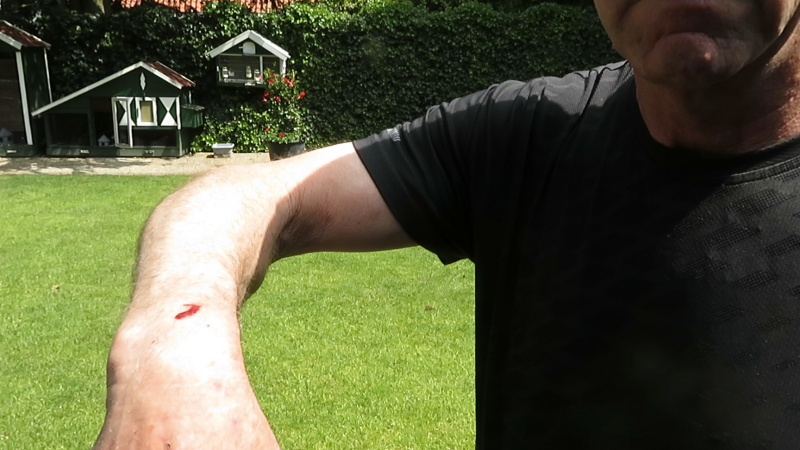 In this photo you can see injuries from biting by a puppy with small sharp teeth.
In this photo you can see injuries from biting by a puppy with small sharp teeth.
I often meet families with a young dog who are desperate. Constantly they are bitten by the dog with all kinds of small but painful injuries to arms and hands. Often you hear then that the same dog is very respectful against the dog of the neighbors. I then explain that the dog of the neighbors the puppy apparently has made clear what behavior he did not accept. And has corrected that behavior.
Now what if you have an older dog that has been growling at you for years? If you now suddenly want to do something about it, it could be that the dog will bite you. The growling has, as it happens, always had a result for the dog and the dog will do even more his best to make that clear. Then you must be careful for dangerous situations and you will have to think well about what you must do. It is then sensible to call in someone with understanding of matter, who can help and advise you well.

